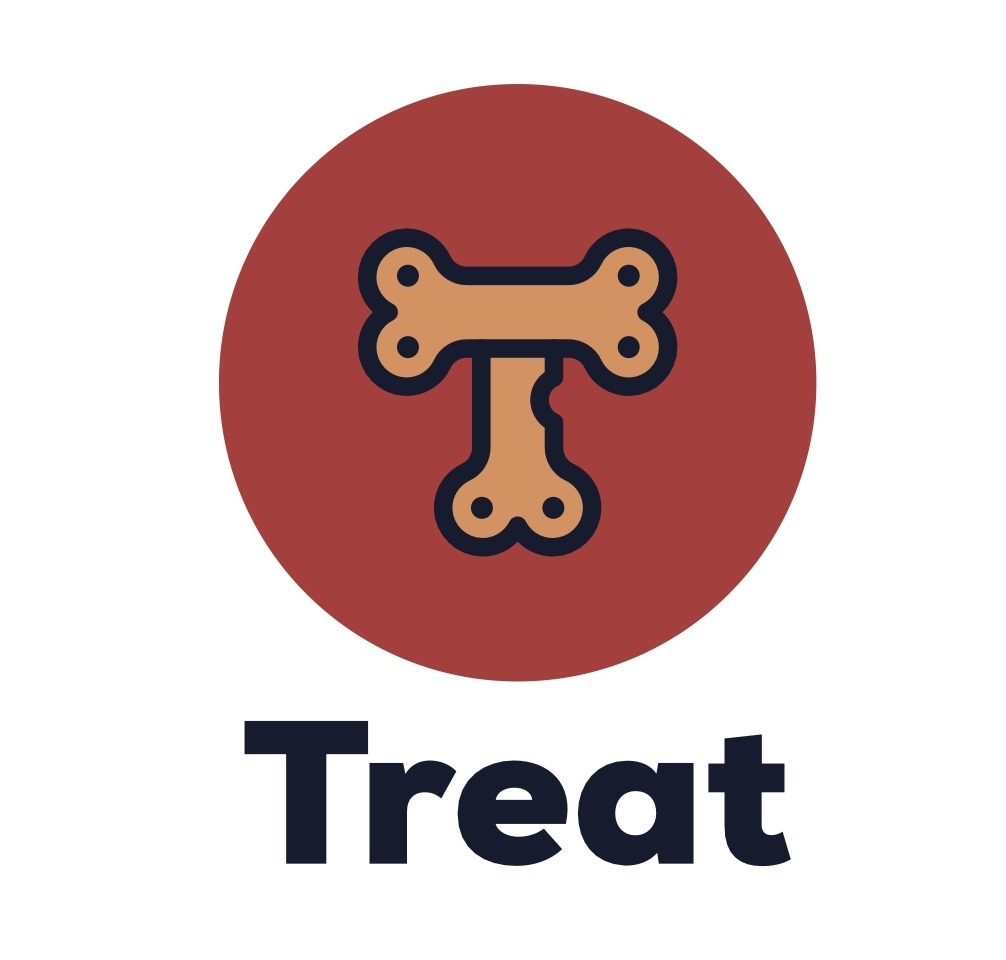Bitget: Peringkat 4 teratas dalam volume perdagangan harian global!
Pangsa pasar BTC62.65%
Listing terbaru di Bitget : Pi Network
BTC/USDT$81724.75 (+5.77%)Indeks Fear and Greed39(Fear)
Indeks altcoin season:0(Bitcoin season)
Koin terlisting di Pra PasarPAWS,WCTTotal arus bersih ETF Bitcoin spot -$127.2M (1H); -$661.8M (7H).Paket hadiah sambutan untuk pengguna baru senilai 6200 USDT.Klaim sekarang
Trading kapan saja, di mana saja dengan aplikasi Bitget. Unduh sekarang
Bitget: Peringkat 4 teratas dalam volume perdagangan harian global!
Pangsa pasar BTC62.65%
Listing terbaru di Bitget : Pi Network
BTC/USDT$81724.75 (+5.77%)Indeks Fear and Greed39(Fear)
Indeks altcoin season:0(Bitcoin season)
Koin terlisting di Pra PasarPAWS,WCTTotal arus bersih ETF Bitcoin spot -$127.2M (1H); -$661.8M (7H).Paket hadiah sambutan untuk pengguna baru senilai 6200 USDT.Klaim sekarang
Trading kapan saja, di mana saja dengan aplikasi Bitget. Unduh sekarang
Bitget: Peringkat 4 teratas dalam volume perdagangan harian global!
Pangsa pasar BTC62.65%
Listing terbaru di Bitget : Pi Network
BTC/USDT$81724.75 (+5.77%)Indeks Fear and Greed39(Fear)
Indeks altcoin season:0(Bitcoin season)
Koin terlisting di Pra PasarPAWS,WCTTotal arus bersih ETF Bitcoin spot -$127.2M (1H); -$661.8M (7H).Paket hadiah sambutan untuk pengguna baru senilai 6200 USDT.Klaim sekarang
Trading kapan saja, di mana saja dengan aplikasi Bitget. Unduh sekarang



Harga TreatTREAT
Dilisting
Mata uang kuotasi:
IDR
Rp67.39+5.54%1D
Konverter TREAT ke IDR
TREAT
IDR
1 TREAT = 0.00 IDR
Bitget menawarkan biaya transaksi terendah di antara semua platform perdagangan utama. Semakin tinggi level VIP kamu, semakin menguntungkan tarifnya.
Harga
TradingView
Kap. pasar
Grafik harga Treat (TREAT/IDR)
Terakhir diperbarui pada 2025-04-10 10:28:42(UTC+0)
Kapitalisasi pasar:--
Kapitalisasi pasar yang sepenuhnya terdilusi:--
Volume (24j):--
Volume 24j / kap. pasar:0.00%
Tertinggi 24j:Rp72.11
Terendah 24j:Rp63.01
Tertinggi sepanjang masa:Rp2,628.14
Terendah sepanjang masa:Rp16.85
Suplai beredar:-- TREAT
Total suplai:
--TREAT
Tingkat peredaran:0.00%
Supply maks.:
--TREAT
Harga dalam BTC:146.24 BTC
Harga dalam ETH:-- ETH
Harga pada kapitalisasi pasar BTC:
--
Harga pada kapitalisasi pasar ETH:
--
Kontrak:--
Bagaimana perasaan kamu tentang Treat hari ini?
Catatan: Informasi ini hanya untuk referensi.
Harga Treat hari ini dalam IDR
Harga live Treat hari ini adalah Rp67.39 IDR, dengan kapitalisasi pasar saat ini sebesar --. Harga Treat naik sebesar 5.54% dalam 24 jam terakhir, dan volume perdagangan 24 jam adalah Rp0.00. Tingkat konversi TREAT/IDR (Treat ke IDR) diperbarui secara real time.
Riwayat harga Treat (IDR)
Harga Treat +300.00% selama setahun terakhir. Harga tertinggi TREAT dalam IDR pada tahun lalu adalah Rp2,628.14 dan harga terendah TREAT dalam IDR pada tahun lalu adalah Rp16.85.
WaktuPerubahan harga (%) Harga terendah
Harga terendah Harga tertinggi
Harga tertinggi 
 Harga terendah
Harga terendah Harga tertinggi
Harga tertinggi 
24h+5.54%Rp63.01Rp72.11
7d-2.68%Rp55.26Rp75.98
30d-17.86%Rp55.26Rp89.46
90d-69.79%Rp55.26Rp223.05
1y+300.00%Rp16.85Rp2,628.14
Sepanjang masa+300.00%Rp16.85(--, Hari ini )Rp2,628.14(--, Hari ini )
Berapa harga tertinggi Treat?
Harga tertinggi sepanjang masa (ATH) dari Treat di IDR adalah Rp2,628.14, yang tercatat pada . Dibandingkan dengan ATH Treat, harga Treat saat ini turun sebesar 97.44%.
Berapa harga terendah Treat?
Harga terendah sepanjang masa (ATL) dari Treat di IDR adalah Rp16.85, yang tercatat pada . Dibandingkan dengan ATL Treat, harga Treat saat ini naik sebesar 300.00%.
Prediksi harga Treat
Berapa harga TREAT di 2026?
Berdasarkan model prediksi kinerja harga historis TREAT, harga TREAT diproyeksikan akan mencapai Rp0.00 di 2026.
Berapa harga TREAT di 2031?
Di tahun 2031, harga TREAT diperkirakan akan mengalami perubahan sebesar +9.00%. Di akhir tahun 2031, harga TREAT diproyeksikan mencapai Rp0.00, dengan ROI kumulatif sebesar -100.00%.
FAQ
Berapa harga Treat saat ini?
Harga live Treat adalah Rp67.39 per (TREAT/IDR) dengan kapitalisasi pasar saat ini sebesar -- IDR. Nilai Treat sering mengalami fluktuasi karena aktivitas 24/7 yang terus-menerus di pasar kripto. Harga Treat saat ini secara real-time dan data historisnya tersedia di Bitget.
Berapa volume perdagangan 24 jam dari Treat?
Selama 24 jam terakhir, volume perdagangan Treat adalah --.
Berapa harga tertinggi sepanjang masa (ATH) dari Treat?
Harga tertinggi sepanjang masa dari Treat adalah Rp2,628.14. Harga tertinggi sepanjang masa ini adalah harga tertinggi untuk Treat sejak diluncurkan.
Bisakah saya membeli Treat di Bitget?
Ya, Treat saat ini tersedia di exchange tersentralisasi Bitget. Untuk petunjuk yang lebih detail, bacalah panduan Bagaimana cara membeli treat kami yang sangat membantu.
Apakah saya bisa mendapatkan penghasilan tetap dari berinvestasi di Treat?
Tentu saja, Bitget menyediakan platform perdagangan strategis, dengan bot trading cerdas untuk mengotomatiskan perdagangan Anda dan memperoleh profit.
Di mana saya bisa membeli Treat dengan biaya terendah?
Dengan bangga kami umumkan bahwa platform perdagangan strategis kini telah tersedia di exchange Bitget. Bitget menawarkan biaya dan kedalaman perdagangan terdepan di industri untuk memastikan investasi yang menguntungkan bagi para trader.
Pasar Treat
Kepemilikan Treat berdasarkan konsentrasi
Whale
Investor
Ritel
Alamat Treat berdasarkan waktu kepemilikan
Holder
Cruiser
Trader
Grafik harga langsung coinInfo.name (12)

Harga Treat global
Berapa nilai Treat sekarang dalam mata uang lain? Terakhir diperbarui: 2025-04-10 10:28:42(UTC+0)
TREAT ke MXN
Mexican Peso
$0.08TREAT ke GTQGuatemalan Quetzal
Q0.03TREAT ke CLPChilean Peso
$3.97TREAT ke HNLHonduran Lempira
L0.1TREAT ke UGXUgandan Shilling
Sh14.76TREAT ke ZARSouth African Rand
R0.08TREAT ke TNDTunisian Dinar
د.ت0.01TREAT ke IQDIraqi Dinar
ع.د5.24TREAT ke TWDNew Taiwan Dollar
NT$0.13TREAT ke RSDSerbian Dinar
дин.0.43TREAT ke DOPDominican Peso
$0.25TREAT ke MYRMalaysian Ringgit
RM0.02TREAT ke GELGeorgian Lari
₾0.01TREAT ke UYUUruguayan Peso
$0.17TREAT ke MADMoroccan Dirham
د.م.0.04TREAT ke OMROmani Rial
ر.ع.0TREAT ke AZNAzerbaijani Manat
₼0.01TREAT ke SEKSwedish Krona
kr0.04TREAT ke KESKenyan Shilling
Sh0.52TREAT ke UAHUkrainian Hryvnia
₴0.17- 1
- 2
- 3
- 4
- 5
Cara Membeli Treat(TREAT)

Buat Akun Bitget Gratis Kamu
Daftar di Bitget dengan alamat email/nomor ponsel milikmu dan buat kata sandi yang kuat untuk mengamankan akunmu.

Verifikasi Akun Kamu
Verifikasikan identitasmu dengan memasukkan informasi pribadi kamu dan mengunggah kartu identitas yang valid.

Konversi Treat ke TREAT
Pilih mata uang kripto untuk diperdagangkan di Bitget.
Pelajari Lebih LanjutBergabunglah di copy trading TREAT dengan mengikuti elite trader.
Setelah mendaftar di Bitget dan berhasil membeli USDT atau token TREAT, kamu juga bisa memulai copy trading dengan mengikuti elite trader.
Listing terbaru di Bitget
Listing baru
Beli lebih banyak
Di mana saya dapat membeli Treat (TREAT)?
Beli kripto di aplikasi Bitget
Daftar dalam hitungan menit untuk membeli kripto melalui kartu kredit atau transfer bank.
Bagian video — verifikasi cepat, trading cepat

Cara menyelesaikan verifikasi identitas di Bitget dan melindungi diri kamu dari penipuan
1. Masuk ke akun Bitget kamu.
2. Jika kamu baru mengenal Bitget, tonton tutorial kami tentang cara membuat akun.
3. Arahkan kursor ke ikon profil kamu, klik "Belum diverifikasi", dan tekan "Verifikasi".
4. Pilih negara atau wilayah penerbit dan jenis ID kamu, lalu ikuti petunjuknya.
5. Pilih "Verifikasi Seluler" atau "PC" berdasarkan preferensimu.
6. Masukkan detail kamu, kirimkan salinan kartu identitasmu, dan ambil foto selfie.
7. Kirimkan pengajuanmu, dan voila, kamu telah menyelesaikan verifikasi identitas!
Investasi mata uang kripto, termasuk membeli Treat secara online melalui Bitget, tunduk pada risiko pasar. Bitget menyediakan cara yang mudah dan nyaman bagi kamu untuk membeli Treat, dan kami berusaha sebaik mungkin untuk menginformasikan kepada pengguna kami secara lengkap tentang setiap mata uang kripto yang kami tawarkan di exchange. Namun, kami tidak bertanggung jawab atas hasil yang mungkin timbul dari pembelian Treat kamu. Halaman ini dan informasi apa pun yang disertakan bukan merupakan dukungan terhadap mata uang kripto tertentu.
Konverter TREAT ke IDR
TREAT
IDR
1 TREAT = 67.39 IDR
Bitget menawarkan biaya transaksi terendah di antara semua platform perdagangan utama. Semakin tinggi level VIP kamu, semakin menguntungkan tarifnya.
Sumber TREAT
Peringkat Treat
Penilaian rata-rata dari komunitas
4.3
Konten ini hanya untuk tujuan informasi.
Insight Bitget
Cryptoking10
19j
Headline: "Pump Coins: High-Risk, High-Reward — Are You Ready for the Ride?"
In the ever-evolving world of cryptocurrency, one term that continually resurfaces is the "$PUMP coin." These are low market cap cryptocurrencies that experience sudden, sharp increases in price — often driven by coordinated buying activity, hype, or speculative interest. While pump coins can deliver explosive short-term gains, they come with extreme risk and should be approached with caution and a clear strategy.
Pump coins typically see their value increase rapidly, sometimes by hundreds or even thousands of percent in a matter of hours or days. This surge is often followed by a sharp decline as early investors cash out their profits, leaving latecomers holding the bag. These sudden spikes are often fueled by social media hype, Telegram groups, or influencers promoting a coin with the intent to drive up demand.
From an analytical perspective, pump coins usually lack strong fundamentals. Most have limited real-world use cases, no working product, and low liquidity. They are attractive primarily because of their price volatility, which creates opportunities for quick profits through day trading or scalping. However, without solid research and precise timing, the risk of significant losses is just as real.
Before jumping into a pump coin, it's crucial to conduct due diligence. Look at the coin's trading volume, market cap, tokenomics, team background, and the recent trend in community activity. Be wary of coins with sudden volume spikes or vague marketing promises. If you decide to participate, set strict entry and exit points, and never invest more than you can afford to lose.
In conclusion, pump coins can be thrilling for risk-tolerant traders seeking rapid gains, but they are not a sustainable investment strategy. Treat them as speculative opportunities, not long-term holdings, and always remain aware of the inherent volatility and manipulation risks they carry.
TREAT-3.38%
HYPE+3.60%

Aicoin-EN-Bitcoincom
1h
Coinbase Co-Founder Fred Ehrsam Unveils Brain Interface Device
Fred Ehrsam and Brian Armstrong started Coinbase in a two-bedroom apartment thirteen years ago. Both men are now billionaires, but Ehrsam has quietly parlayed his fortunes into neuroscience innovation, launching a brain interface startup in 2024 called Nudge. On Monday, the firm unveiled its first product, the Nudge Zero, a non-invasive ultrasound neuromodulation device.
That’s a mouthful, but “non-invasive ultrasound neuromodulation” simply means modifying brain activity by using an ultrasound machine. Such a device emits ultrasound waves that impact cell membranes in the brain without causing permanent changes or damage.
(The “Nudge Zero” is the first device from Fred Ehrsam’s neuroscience startup / Nudge on X)
Reasons for using ultrasound neuromodulation devices vary, but they typically fall into two overlapping categories, medical and therapeutic. Medical issues would include neurological conditions such as epilepsy and pain management, while therapeutic conditions would encompass less acute scenarios such as depression.
The Nudge Zero, according to Ehrsam, will first tackle acute medical conditions, and its predecessor will eventually be introduced as a therapeutic solution for individuals seeking various forms of mental well-being.
“We will first use the device to attempt to treat acute medical conditions in the coming months,” Ehrsam explained. “With the eventual goal of creating a headphone-like miniaturized version … to enhance mood, cognition, and daily life for healthy people.”
(Computer renderings of what Nudge’s therapeutic wearables may look like once launched / Nudge on X)
Prior to launching Nudge in 2024, Ehrsam and Sequioa veteran Matt Huang co-founded Paradigm in 2018, a crypto-focused venture capital firm that manages three funds, the most recent of which closed at $850 million last June.
The 36-year-old Ehrsam, now worth $2.1 billion, according to Forbes, stepped away from his managing partner role at the firm in 2023 but has remained at Paradigm as a general partner. It appears neuroscience and not crypto is now his primary focus.
“We believe improving the human experience is the most important thing to work on. This should be the goal of technology,” Ehrsam said. “And building technologies to interface with the brain is the most direct way of doing so.”
免责声明:本文章仅代表作者个人观点,不代表本平台的立场和观点。本文章仅供信息分享,不构成对任何人的任何投资建议。用户与作者之间的任何争议,与本平台无关。如网页中刊载的文章或图片涉及侵权,请提供相关的权利证明和身份证明发送邮件到support@aicoin.com,本平台相关工作人员将会进行核查。
PEOPLE-3.24%
WAVES+8.54%
BGUSER-X0JD06RP
2h
$PUMP Coin: A True Test of Patience or a Trader’s Playground?"
£Pump Coin sounds like an interesting case for cryptocurrency enthusiasts, especially given the speculative nature of many newer tokens. Whether it’s a true test of patience or a trader’s playground depends on its volatility, long-term value proposition, and the community that supports it.
Patience Test: If £Pump Coin is subject to wild price swings without clear fundamentals, it could be a "test of patience" for holders who believe in its potential but need to ride through unstable periods. The coin might be driven by hype, causing investors to hold out in hopes of a significant future payoff—requiring them to be patient.
Trader’s Playground: On the flip side, if the coin is highly volatile, with frequent price movements driven by speculation, short-term traders could treat it as a playground. They would buy on dips and sell on peaks, profiting from the volatility.
It’s essential to track £Pump Coin’s market behavior, liquidity, and any associated narratives (e.g., social media trends or influencer endorsements) to determine which camp it falls into. It’s also worth evaluating whether it has a solid use case or if it’s more of a meme coin playing off market hype.
Would you like a deeper dive into the current state of this coin, or are you more curious about the general market trends for new crypto tokens like £Pump Coin?
HOLD-1.98%
TREAT-3.38%

Mercysnow
2h
Bitcoin Macro Wave Analysis: The Calm Before Wave 3? 📊
$BTC
Bitcoin $BTC is navigating a massive macro structure, and Elliott Wave theory gives us two powerful possibilities. Whether we’re mid-correction or launching a new cycle, Wave 3 is coming — and it could change everything.
---
1️⃣ Scenario One: The Flat Correction Theory
If we treat the entire move from 69K → 15K → 109K → Now as a large-scale Flat correction, here’s the possible wave structure:
Wave A: 69K → 15K (5-wave drop)
Wave B: 15K → 109K (possibly 5 waves, or a complex 3)
Wave C: 109K → Now (final leg, either complete or still in progress)
🔍 Inside Wave C:
If we’ve already dropped 5 waves from 109K to 74K, it could be a Running Flat, and the correction is done.
If not, that move could just be wave (1) of C, meaning more downside ahead:
Target: 52K–64K (standard flat)
Worst Case (Expanded Flat): Could dip below 15K, then reverse sharply.
What Follows?
After Wave C completes, Wave 3 begins — the strongest and fastest leg in Elliott Wave theory.
Wave 3 Target: 140K minimum — possibly even 300K–500K
---
2️⃣ Scenario Two: A New Macro Cycle Begins
An alternate structure:
The rally from 15K → 109K may have been Wave 1 of a brand-new macro cycle.
Wave A: 109K → 74K (5-wave correction)
Wave B: Ongoing — heading toward 88–90K+
Wave C: A final dip, targeting 52K–64K
🔺 After That?
Once this ABC correction finishes, Wave 3 of the new cycle kicks off — potentially historic in size.
Wave 3 Target: 220K to 400K+
---
✅ Quick Comparison Table
---
Final Thoughts: Stay Ahead of the Wave
Whether we’re in a flat correction or the early stages of a new bull cycle, one thing is clear:
⏳ Wave 3 is coming… and it may be the largest Bitcoin rally in history.
Stay prepared, manage your strategy, and don’t miss the opportunity when the next move starts.
---
#Bitcoin #BTC #ElliottWave #CryptoMacro #BinanceSquare #BullRun #BTCWave3 #LongTermVision
BTC-1.04%
MOVE-4.97%

Holyson001
3h
Riding the Hype: Can Pump Coins Deliver Real Gains or Just Exit Scams?
Pump Coins are everywhere right now—blasting through charts, making headlines, and stirring up both excitement and fear in the crypto space. But the real question is: are Pump Coins legit opportunities, or are we just chasing exit scams?
I recently jumped into a few Pump Coins, and here’s what I learned, along with some insights on how to trade them smartly.
What Are Pump Coins Really About?
Pump Coins are tokens designed to surge fast, attract attention, and reward early movers. They often lack deep fundamentals, but thrive on:
Hype and FOMO
Fast-moving communities
Flashy marketing and token burns
Influencer and social media momentum
The gains can be insane—sometimes 2x, 5x, even 10x in a day—but they also carry extreme risk. One wrong move, and you're holding a bag that never recovers.
My Experience Trading Pump Coins
I got into a trending Pump Coin early, caught a quick 3x, and exited just before the first major dump. Timing was everything. The key? Watching volume spikes, tracking social mentions, and getting out before the hype fades.
Since then, I’ve played a few more—sometimes winning, sometimes learning the hard way. But one thing is clear: Pump Coins aren’t for the faint of heart.
Can You Actually Win With Pump Coins?
Yes—but you need a clear strategy:
Entry early or not at all: Don’t chase green candles.
Use tight stop-losses: Protect your capital.
Set exit targets: Don’t get greedy.
Track the narrative: Once influencers go silent, the dump usually follows.
Is It All a Scam?
Not always. Some Pump Coins evolve into legit communities or launch new utilities. But most are momentum plays. If you treat them like long-term investments, you're likely to loss .
Final Thoughts
Pump Coins are like riding a rollercoaster blindfolded—you can scream from excitement or regret. But if you're smart, fast, and disciplined, there's real money to be made.
I'm still exploring Pump Coins, but with caution and strategy. Want to trade them? Learn the game first. And never risk more than you can afford to lose.
$PUMP
X-6.08%
MOVE-4.97%
Aset terkait
Mata uang kripto populer
Pilihan 8 mata uang kripto teratas berdasarkan kapitalisasi pasar.
Baru ditambahkan
Mata uang kripto yang baru saja ditambahkan.
Kap. pasar yang sebanding
Di antara semua aset Bitget, 8 aset ini adalah yang paling mendekati kapitalisasi pasar Treat.
Info tambahan tentang Treat
Ringkasan koin
Terkait koin
Terkait perdagangan
Trading
Earn

































